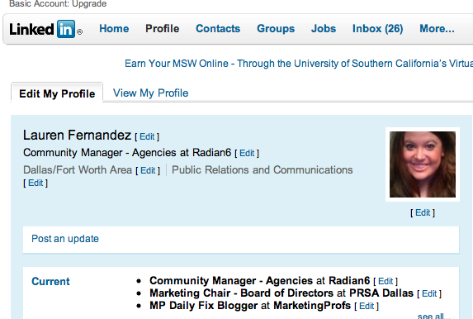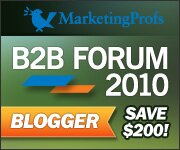LinkedIn. It’s used widely by business professionals to engage, connect and share information with one another. Many question it’s usefulness in the business world, even with new features such as Company Follow and Likes.
So how can you use it? Social Media is not about the platforms, but the ideas and concepts behind it. Platforms are used for execution. It’s all about how a brand approaches and where the audience is. Much of these four specific areas use examples from my current job, but can be applicable across the board.
Follow Sales Leads
So, awesome. You have a solid relationship with someone on a project or they use your company product. You call one day and someone else picks up the phone, “XX no longer works here.” Well, crap. Where do they work? We only had a professional relationship, with work email, phone and company.
You have to love the Internet and Google. Most will change their information at the request of the company left, and LinkedIn, as a professional site, is one of the first to be changed.
Example: If a solid contact/friend I have moves to a different agency, and they don’t use R6 (but want some type of software thats similar), that can be leveraged in the future – not through hard sell, but through relationships. If they are in need of SMM, they have a.) experience using it b.) a solid relationship c.) pre-seeded buy-in. It should be noted that just because software worked in a previous agency, it should mesh with measurable objectives at the new one. It’s not always a fit.
Follow Current Clients
We all like to follow brands. A pre-seeded brand follow might be more B2C and retail when it comes to LinkedIn, but from a business perspective, it can come in handy as well. By following brands, you can also follow personnel. You can see who has moved from agency to agency, who has been promoted, different clients they are working on (as most PR people list out the brands they represent.)
Example: Agency dynamic is unique in that the 30 and unders (SAEs and below) have an extremely high turnover rate. It’s not unusual to move from account to account as needed, to change agencies, to leave because it gets too tough. On the flipside, the execs don’t change as much, and when they do, it’s huge.
Network of Recommendations
Yes, LinkedIn can be used as a lead gen tool. The recommendations shown on your profile play a big role into the first impression – especially if your page is high on Google Search Results. Did you know LinkedIn also has DirectAds - a feature that allows you to push relevant ads to targeted demographics in the entire LinkedIn subscriber base. It’s similar to ad targeting in Facebook or even Google AdWords.
Example: On the agency side, when I was interested in software or a product, I immediately Googled the company, then looked for testimonials. Many times, it lead me to a LinkedIn page – where I could see the connections/relationships, how long they had worked there and what type of experience they had.
Groups
Utilize Groups and LinkedIn Answers to gain “expertise points” in your specific category. Users tend to trust those that have the expertise, rather than the latter. You are not only engaging an audience and providing information, but your ideas and thoughts are being pushed into the News Feed of all connections. Talk about recognition and being seen by clients or people you work with.
Example: As a community manager, its imperative to be where the content is – no matter the platform. If people are talking about something, its important to answer questions that make sense.
So, what would you add? Do you agree/disagree? Let’s chat.





